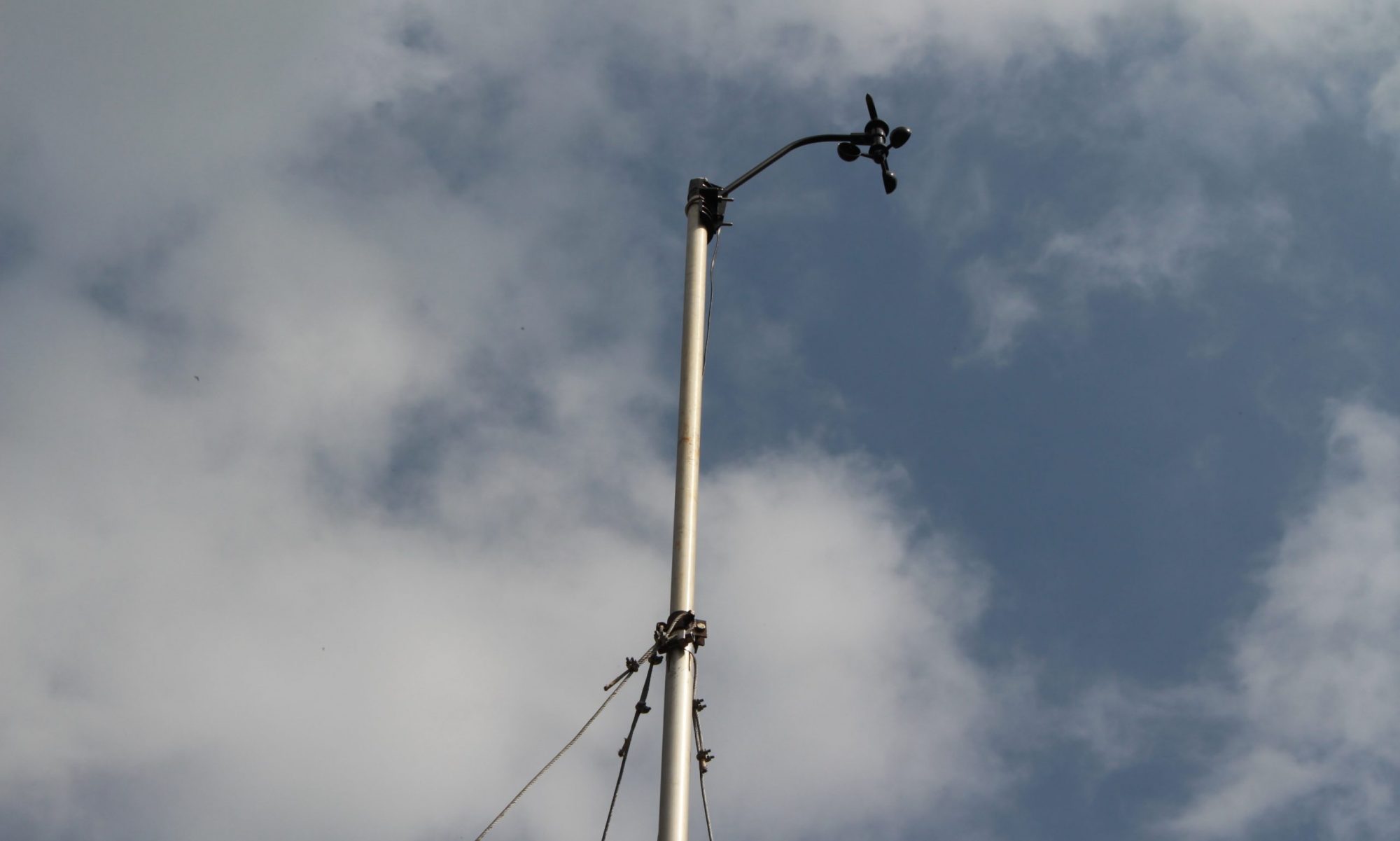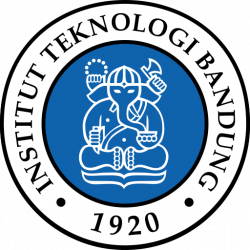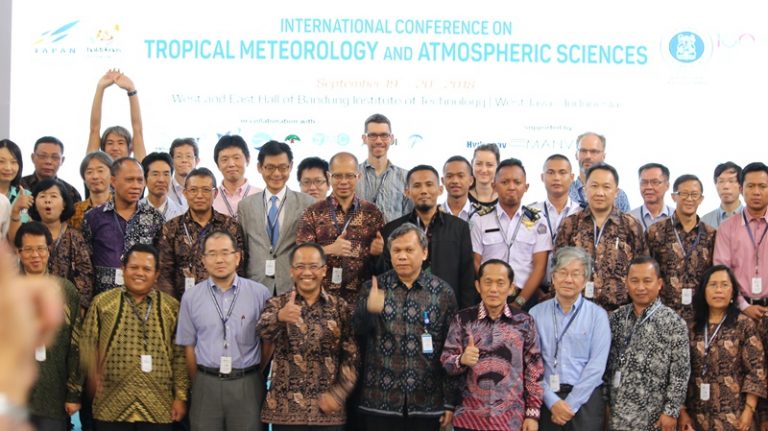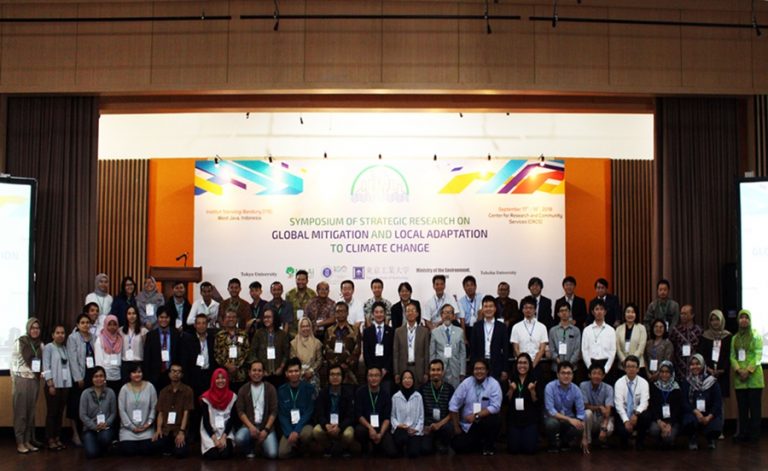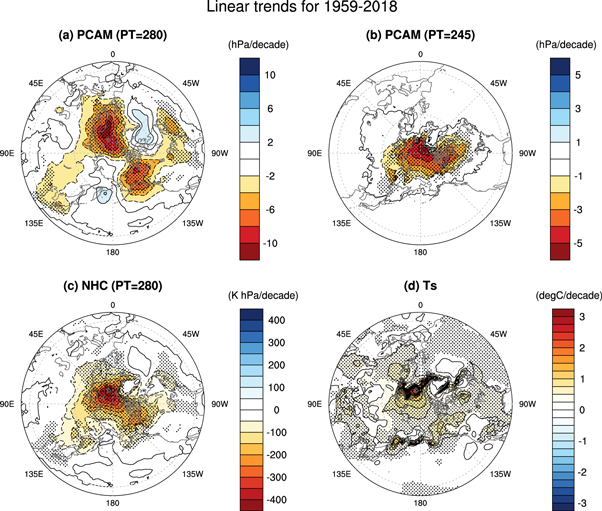
Pemanasan global (global warming) biasanya ditunjukkan dengan parameter temperatur permukaan yang terus menaik. Indikator ini hanya valid untuk bagian atmosfer permukaan namun tidak bisa menggambarkan karakter vertikal atmosfer. Penelitian baru-baru ini yang diterbitkan di Environmental Research Letters mengusulkan indikator tambahan global warming yaitu massa udara yang dintegrasi sampai suatu level isentropik. Dengan menunjukkan pola tren massa udara dingin di Kutub Utara, indikator tersebut bisa menggambarkan dengan jelas pengurangan konsisten udara dingin yang drastis di wilayah Artik (Arctic Amplification).
Referensi:
Kanno, Y., J. E. Walsh, M. Rais Abdillah, J. Yamaguchi, T. Iwasaki, 2019: Indicators and trends of polar cold airmass. Environmental Research Letters. 14. 025006. doi:10.1088/1748-9326/aaf42b. https://iopscience.iop.org/article/10.1088/1748-9326/aaf42b
Abstract. Trends and variations in the amount of cold airmass in the Arctic and the Northern Hemisphere are evaluated for the 60 year period, 1959–2018. The two indicators are (1) polar cold air mass (PCAM), which is the amount of air below a potential temperature threshold, and (2) negative heat content (NHC), which includes a weighting by coldness. Because the metrics of coldness are based on multiple layers in the atmosphere, they provide a more comprehensive framework for assessment of warming than is provided by surface air temperatures alone. The negative trends of PCAM and NHC are stronger (as a % per decade) when the threshold is 245 K rather than 280 K, indicating that the loss of extremely cold air is happening at a faster rate than the loss of moderately cold air. The loss of cold air has accelerated, as the most rapid loss of NHC has occurred in recent decades (1989–2018). The spatial patterns of the trends of PCAM and NHC provide another manifestation of Arctic amplification. Of the various teleconnection indices, the Atlantic Multidecadal Oscillation shows the strongest correlations with the spatially integrated metrics of moderate coldness. Several Pacific indices also correlate significantly with these indicators. However, the amount of extremely cold air mass does not correlate significantly with the indices of internal variability used here.
